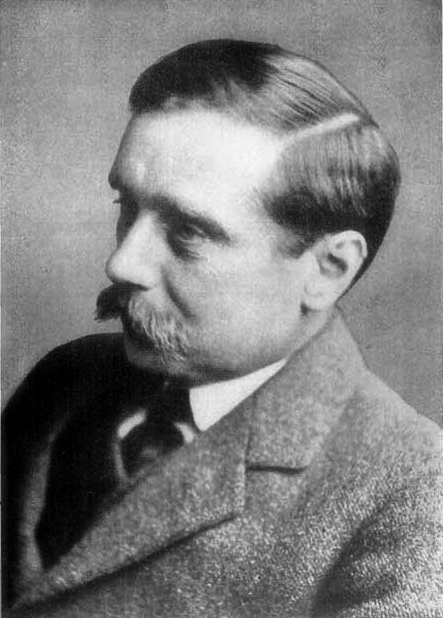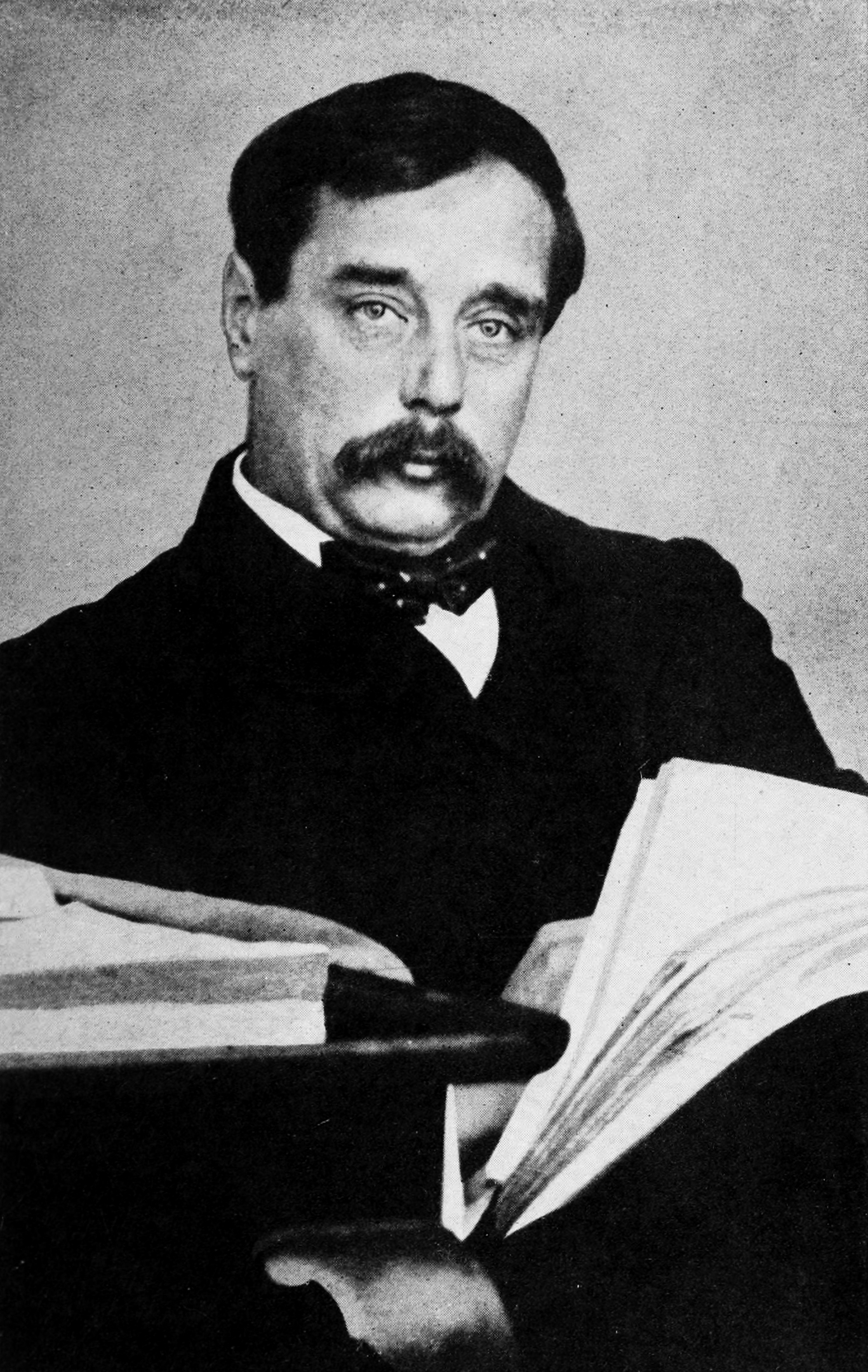Joan and Peter: The Story of an Education, is a novel written by the English author H. G. Wells (1866–1946), published in 1918. It tells of the schooling and adolescence of Joan Debenham and Peter Stubland,[1] “samples of their generation, for ‘what mankind becomes is nothing but the sum of what we have made of the Joans and Peters’ ”.[2] It is written as a critique of the pre-First World War English education system, and a general reflection on the purposes of education in the post-war world.
Wells himself considered Joan and Peter to be “one of the most ambitious of his novels”,[3] but it “rapidly faded into oblivion” and is today almost completely forgotten.[2] In his autobiography Wells admits that although the novel “starts respectably”, it is “as shamelessly unfinished as a Gothic cathedral”.[4]
A short excerpt from the novel was printed in Fantasia Mathematica Anthology of stories, humour, poems, etc. on mathematical topics, published in 1958. (1958) under the title “Peter Learns Arithmetic”.
Anthology of stories, humour, poems, etc. on mathematical topics, published in 1958. (1958) under the title “Peter Learns Arithmetic”.
Synopsis
The novel begins in 1893 with the birth of Peter Stublands, but the first three chapters are devoted to the lives of his parents. Peter’s father, Arthur, is one of the heirs of a wealthy family of Quaker manufacturers from the West of England. His mother Dolly is the daughter of a vicar from a well-off family, but being intellectually inclined, she has “read herself out of the great Anglican culture.”[5] Arthur, artistically inclined but not especially gifted, is a devotee of the Arts and Crafts movement and a Fabian socialist. Dolly meets him and falls in love with him while she is studying “in the Huxley days as a free student at the Royal College of Science.”[6][a]Wells himself studied at this institution, then known as the Normal School of Science, from 1884 until 1887, under Professor T. H. Huxley.[7] Arthur designs a house near Limpsfield called the Ingle-Nook, where they live and where Peter is born. Arthur has two sisters with advanced ideas – Aunt Phyllis and Aunt Phoebe – who are regular visitors.
But Dolly has retained strong feelings for a cousin who joined the navy, Oswald Sydenham, whose face is badly scarred from the bombardment of Alexandria, and is devoting his career to extending the British Empire in Africa. When Arthur’s free-thinking goes so far as to make him unfaithful to Dolly, it is strongly implied that Oswald and Dolly fall in love, but Dolly eventually rejects Oswald’s passionate appeal to defy convention and live with him in Central Africa. Dejected, Oswald returns to Africa. The reconciliation of Dolly and Arthur has a tragic consequence, however: on a trip meant to celebrate the overcoming of their differences, Arthur’s recklessness with an amateur boatman causes them to drown off Capri.
In their wills, Dolly and Arthur had named Oswald as the guardian of their son; because of Dolly’s leanings toward Oswald, Arthur changed his will before he died to replace him with three other guardians: Aunts Phoebe and Phyllis, on his side, and Lady Charlotte Sydenham on Dolly’s, having assumed that she was a dignified, tolerable woman. The family solicitor, Mr. Sycamore, sends Oswald a letter telling him that, due to the lack of information, he has had to generalize and state that Dolly drowned before Arthur, therefore validating his will. This generalization results in an extended battle over the education of Peter and also of Joan, a child of Dolly’s brother born out of wedlock and entrusted to them.
Phoebe and Phyllis are eccentrics devoted to the suffragette cause, and undertake their guardianship with enthusiasm, but Lady Charlotte, “one of those large, ignorant, ruthless, Low-Church, wealthy, and well-born ladies who did so much to make England what it was in the days before the Great War,”[8] abhors their values. She schemes to christen Joan and Peter, then plots to remove the children from the faddish “School of St. George and the Venerable Bede,” based on the ideas of Froebel and Ruskin, in order to educate them more traditionally. With the assistance of her solicitor, Lady Charlotte kidnaps the children; Peter is placed in the High Cross Preparatory School, located near Windsor Castle, and Joan finds herself at the mercy of an evil-spirited Mrs. Pybus, the sister of Lady Charlotte’s maid. Peter is bullied and mistreated by fellow-students and teachers alike, and runs away after being unjustly punished; Joan falls ill with measles. Oswald returns to England after having “given nearly eighteen years to East and Central Africa,”[9] especially Uganda. It is 1903, and his health has forced him to return to England, determined to devote himself to the education of his wards.
The battle over control of the children’s education ends when witnesses prove that Dolly perished after Arthur. As a result, her will prevails. Oswald becomes sole guardian of Joan and Peter and undertakes to find them the best education possible. He is disappointed to learn that there are no schools adapted to the needs of the time. Ultimately, he sends Peter to White Court and Joan to Highmorton School. Peter later attends Caxton, and Oswald moves to a home at Pelham Ford, in Ware, Hertfordshire. A lady named Mrs. Moxton keeps house.
Chapter 11, “Adolescence,” is the longest of the novel, and analyzes in some detail the growth to maturity of Joan and Peter. That they have grown up as brother and sister delays the realization that they love each other; indeed, for much of their adolescence they are deeply at odds with one another, especially about their friends. But when Joan accidentally learns through a friend and Aunt Phyllis that her family is largely unrelated to Peter, deeper feelings re-emerge. Joan and Peter are now both students at Cambridge.
The Great War begins, and all the men of their acquaintance enlist. Oswald is invalided; most of Joan’s lovers are killed in various ways; Peter joins the Royal Flying Corps. He is nearly killed in combat, and as he recovers from serious wounds he becomes more enlightened about life. While he is on leave back in England, Joan tells Peter that she loves him. They marry. Peter is again badly wounded when the observation balloon in which he is serving is shot down, but he is out of the war, and looks forward to working towards a future World State.
Themes
Joan and Peter develops a number of characteristically Wellsian themes: the nature of humanity and its relation to God and the universe; educational stagnation and its role in the suffering endured during the First World War; England’s need to be free of the Anglican system; and the role of the British Empire in setting up a new World State.
The educational ideas presented in the novel owe much to Wells’s friendship with F. W. Sanderson, the headmaster of Oundle School, where Wells’s two sons were enrolled as pupils in 1914. Sanderson believed that education should be reoriented away from selfish ends and towards creative service and cooperation.[2]
While recuperating from his combat wounds, Peter has a dream of God as a “Great Experimenter” who reproaches him with not sufficiently exerting himself to realize his ideals. Human beings should not complain to God about the world, the Lord God explains, but “change it.”[10] As a result of this vision and of an encounter with an enlightened Indian, Peter “clearly decided to become personally responsible for the reconstruction of the British Empire.”[11]
Critical reception
Joan and Peter was “well received by [Wells’s] friends, but less so by outside reviewers”; Virginia Woolf, for example, judged it to be too didactic to be successful fiction.[3] But she did allow the book’s “continuity and vitality”, and praised Wells’s ability to constitute a “whole world.”[12] Thomas Hardy praised the book, and read it aloud to his wife in the evening.[3]
See also
- List of works by H. G. Wells
 List of publications written by H. G. Wells during the more than fifty years of his literary career.
List of publications written by H. G. Wells during the more than fifty years of his literary career.
Notes
| a | Wells himself studied at this institution, then known as the Normal School of Science, from 1884 until 1887, under Professor T. H. Huxley.[7] |
|---|
References
Works cited
This article may contain text from Wikipedia, released under the Creative Commons Attribution-ShareAlike 4.0 International License.

